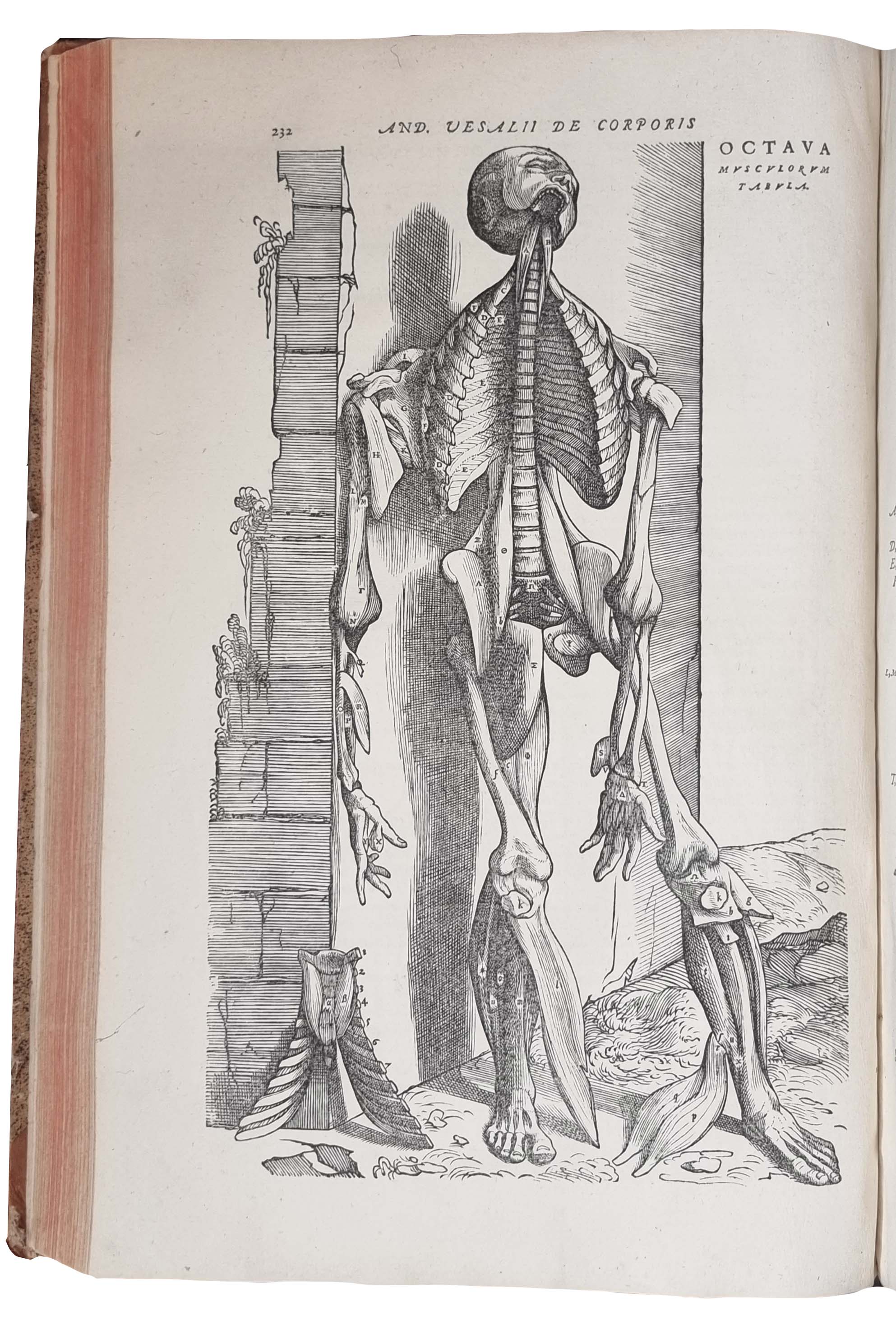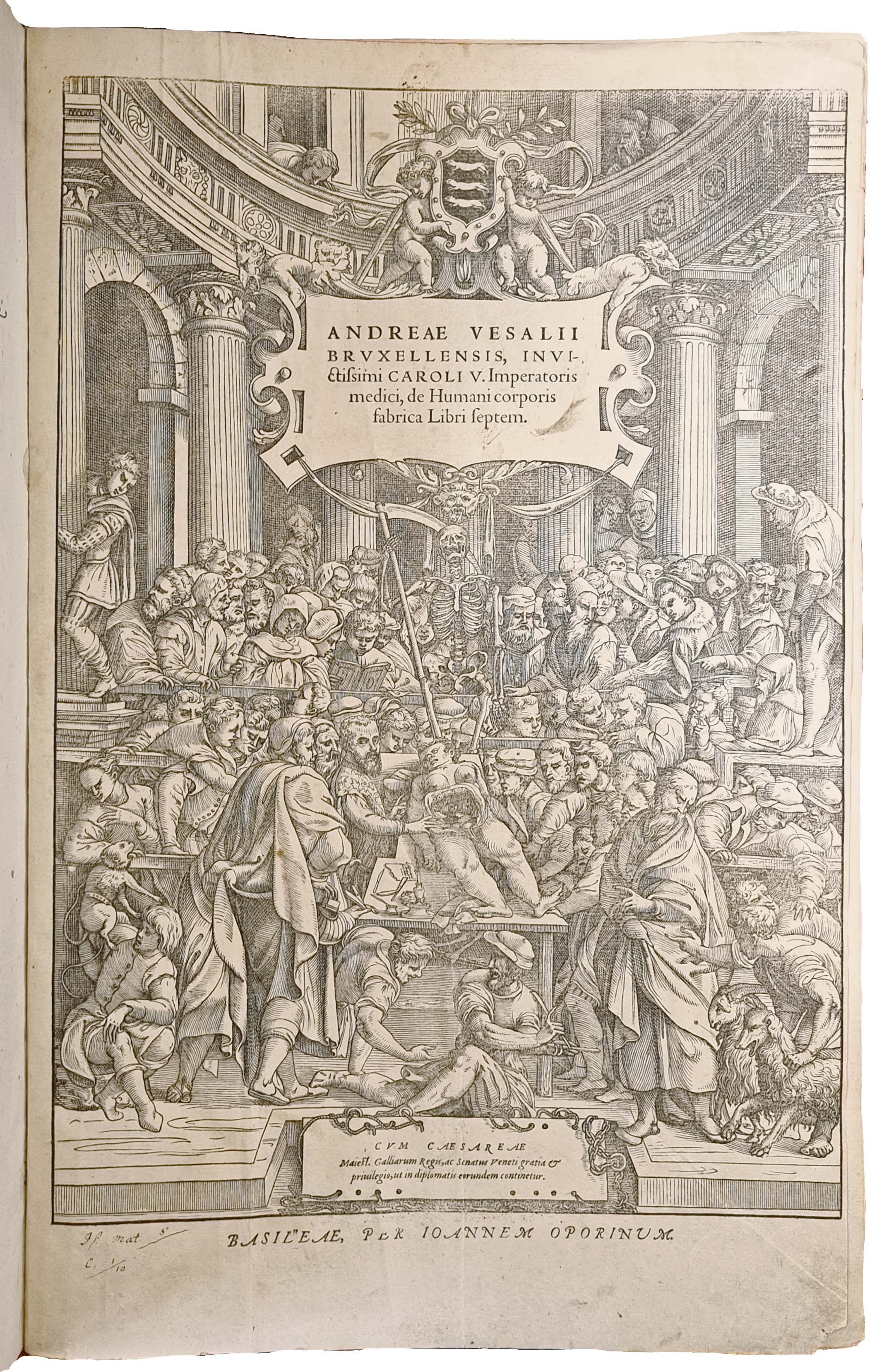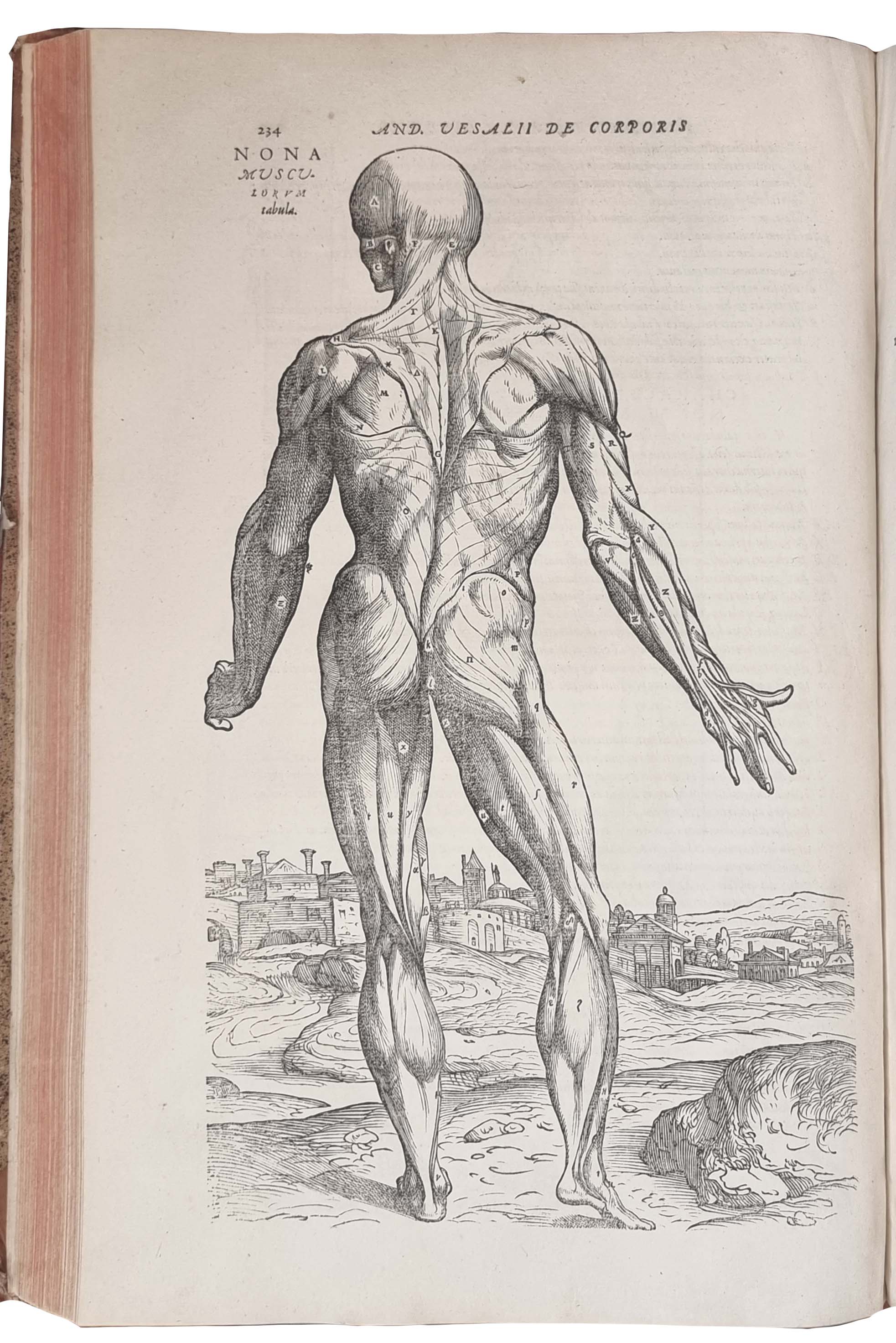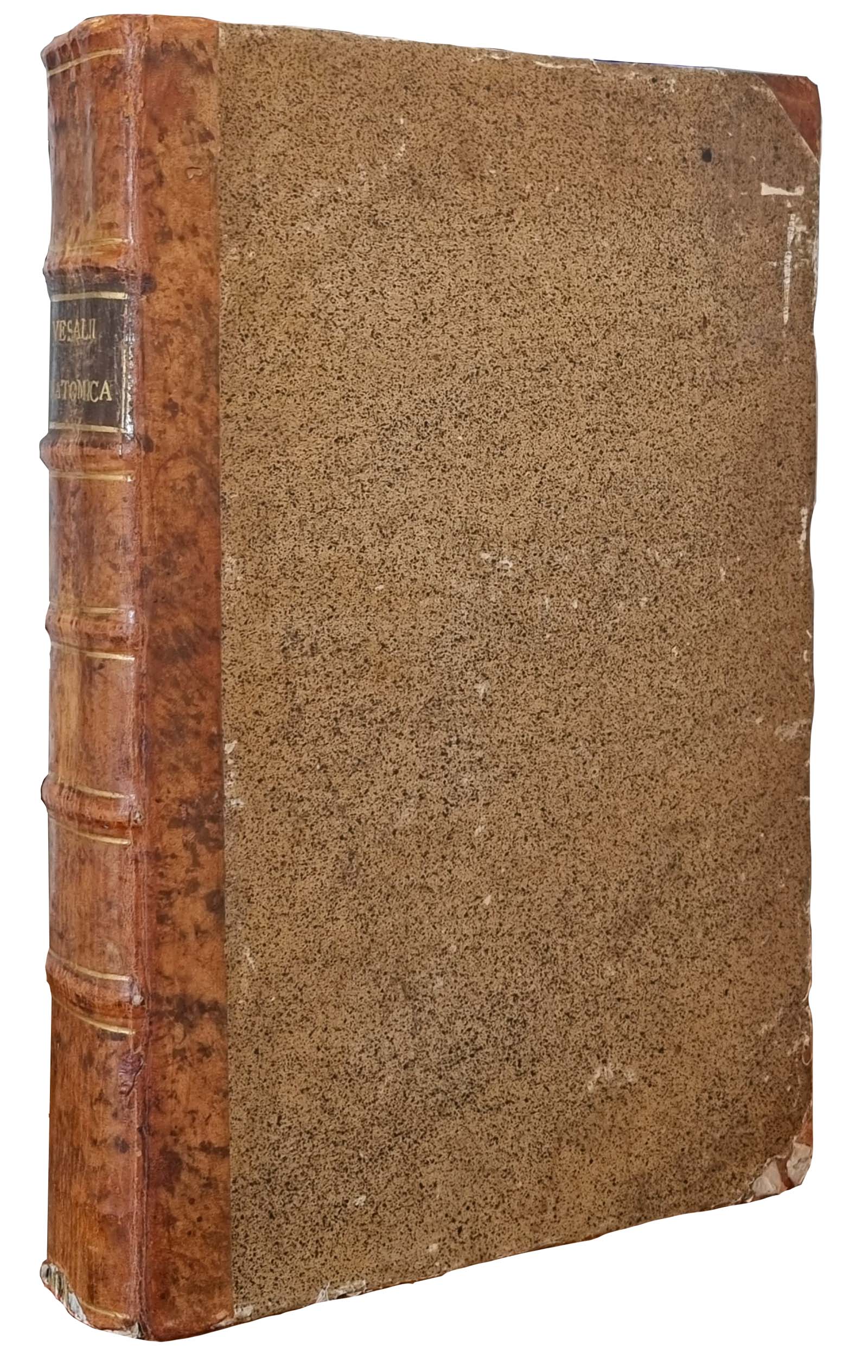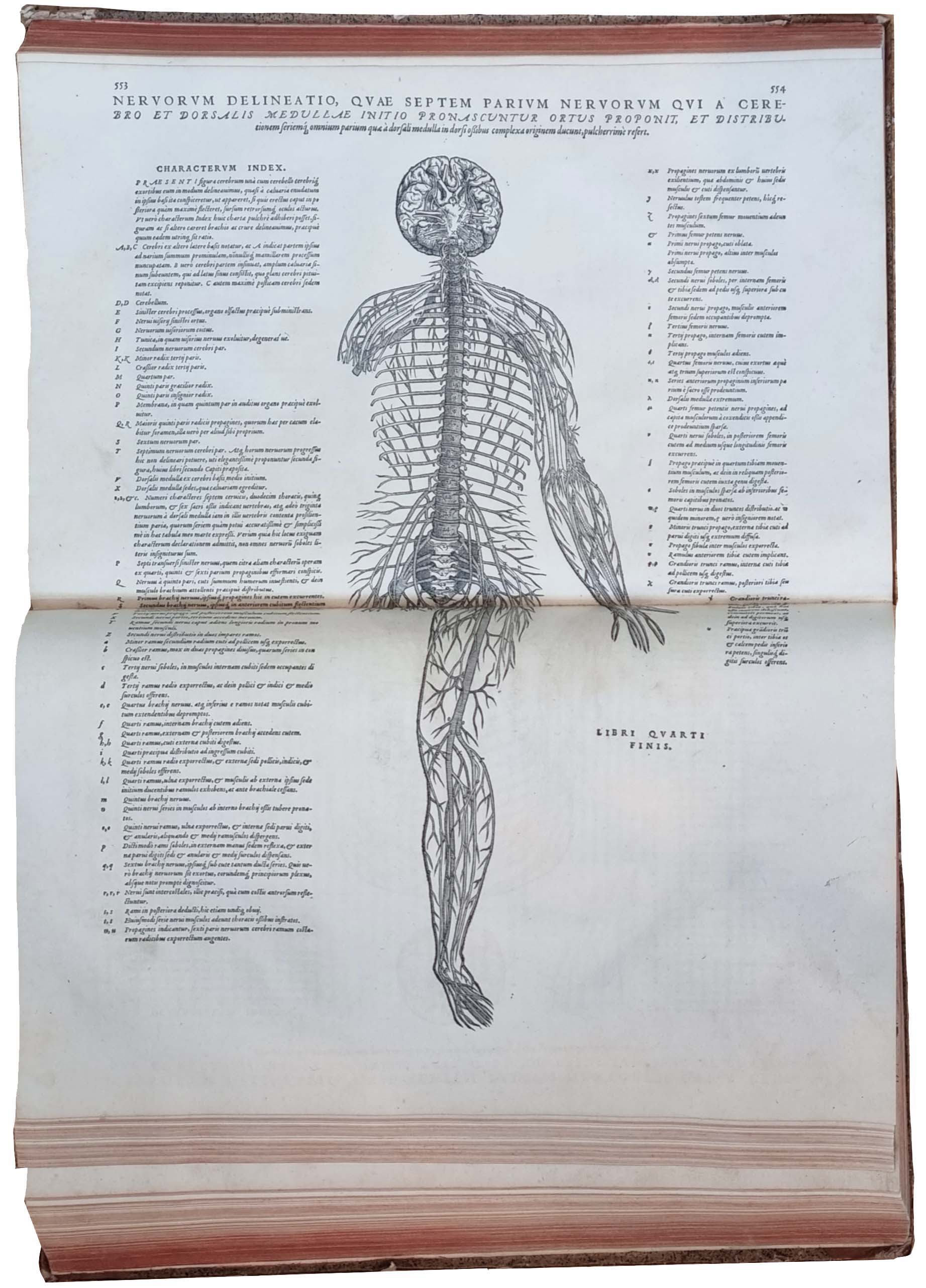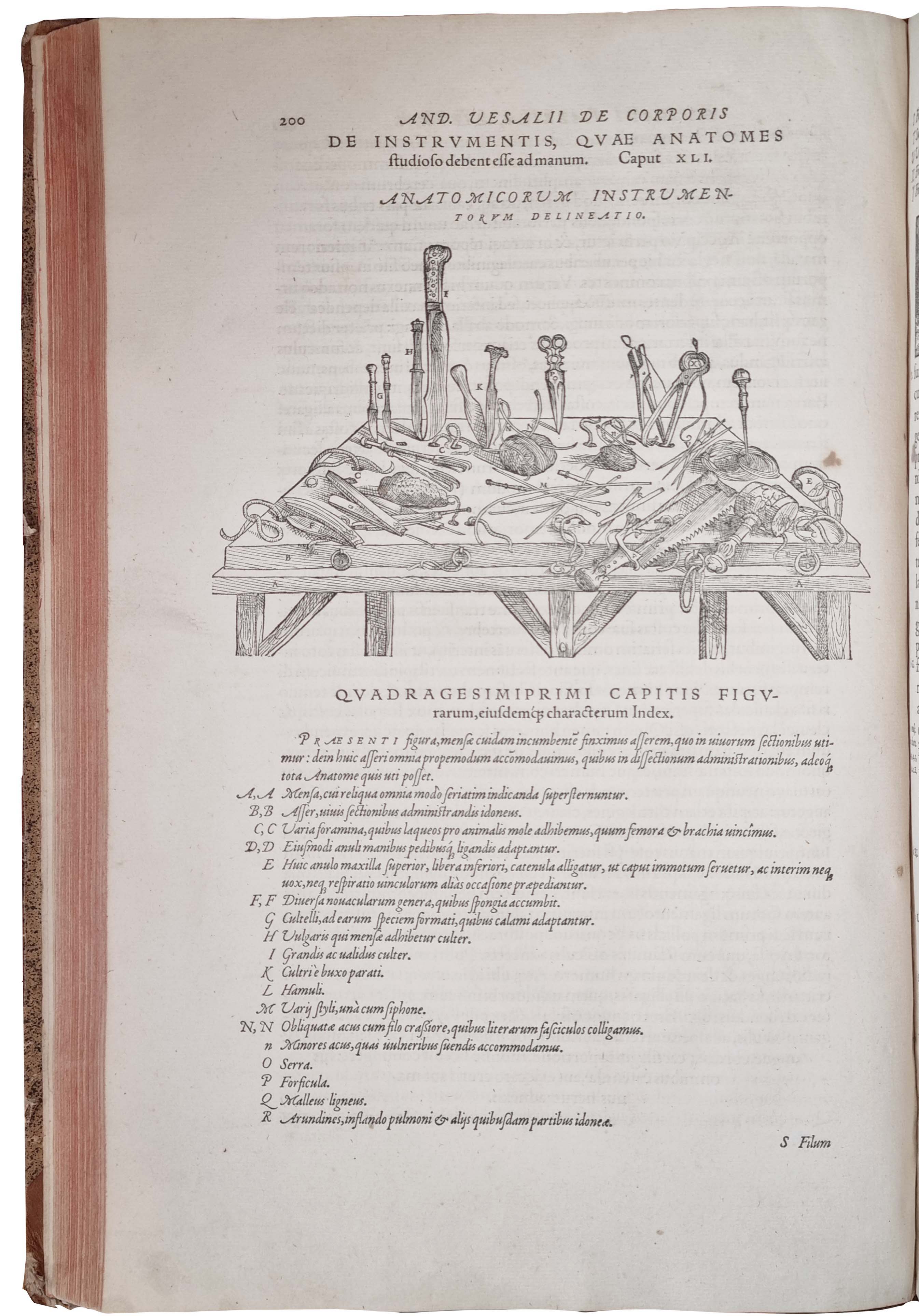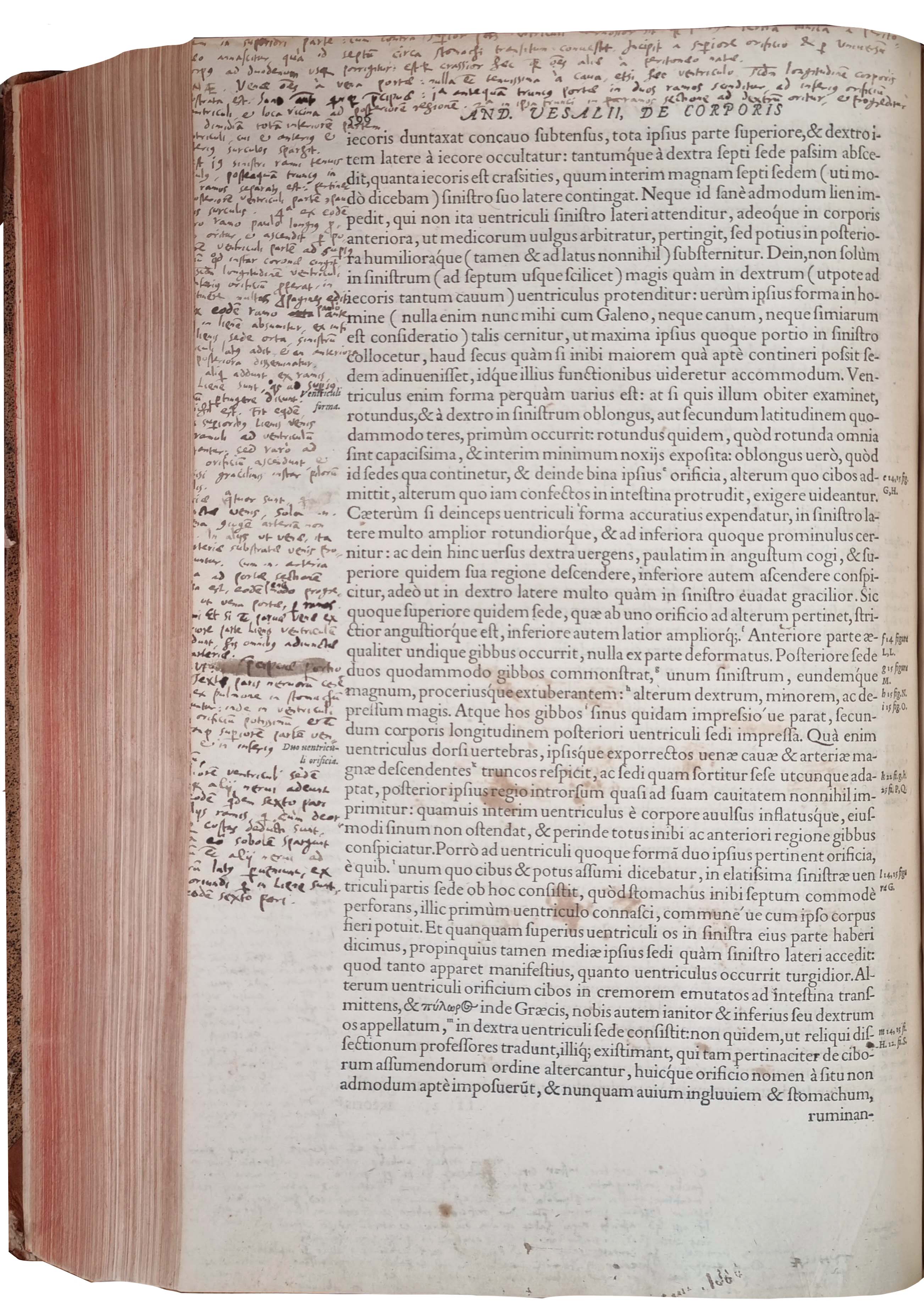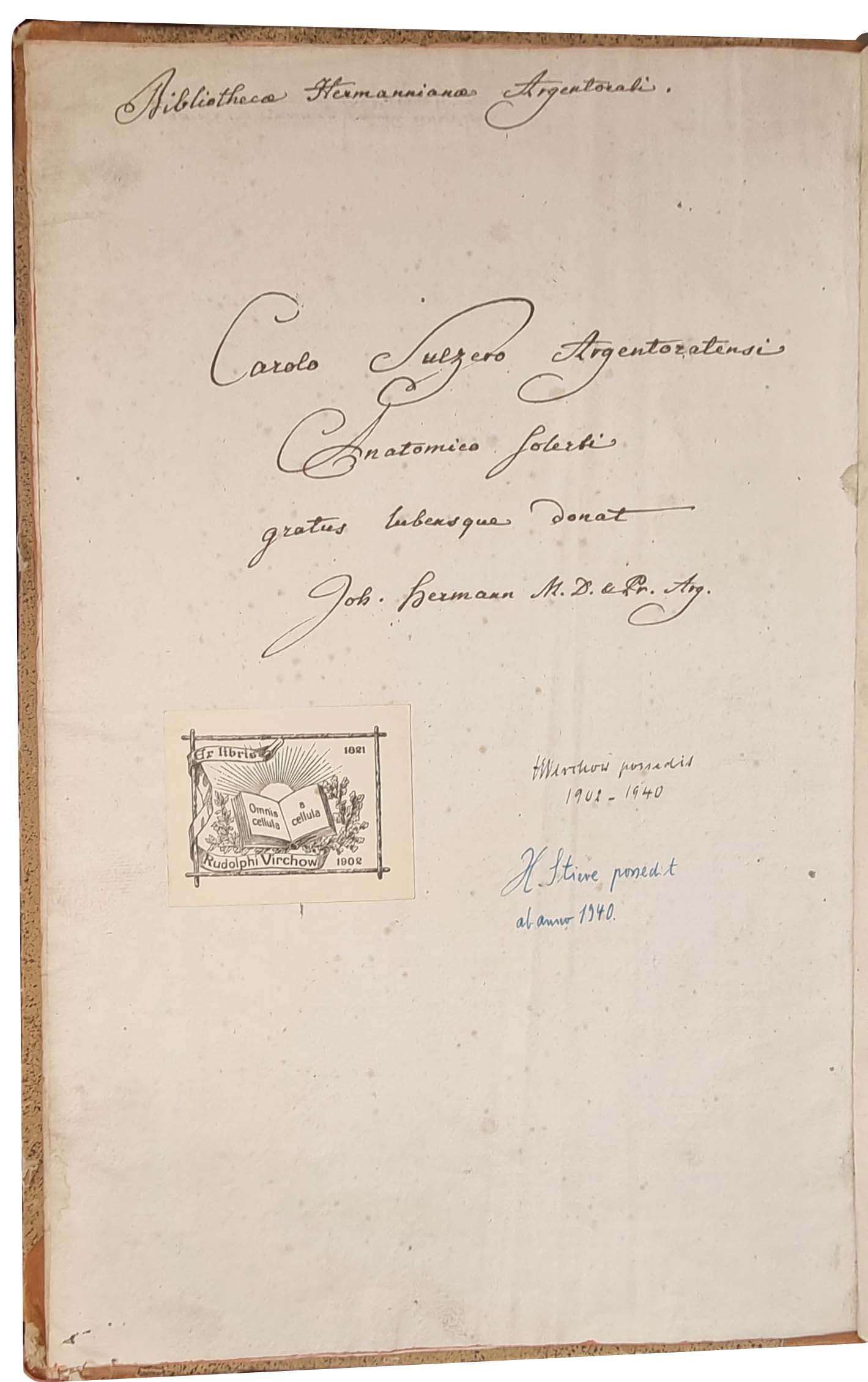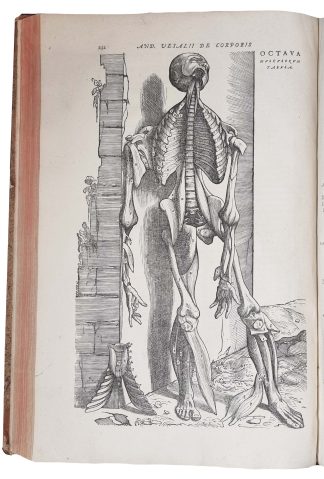VESALIUS, Andreas.
A FASCINATING PROVENANCE
De humani corporis fabrica libri septem
Basel, Johannes Oporinus, 1555£98,500.00
Large folio, pp. (vi) 824 (xxiv). Roman and italic letter, occasional Greek and Hebrew. Woodcut historiated initials. Splendid woodcut t-p of a theatre dissection, printer’s device on verso of last. Famous portrait of Vesalius dissecting an arm on verso of a6, 171 spectacular anatomical woodcuts, 2 folded leaves of plates illustrating the vascular and nervous systems. Early Latin annotations, some extensive. Very rare marginal fingersoiling, light spotting or waterstaining to a few ll., little ink smudges to title blank, small ink splashes to 2 ll. and to some blank lower margins, wax drops to lower margins of 698-699, early repairs to p. 219. An extremely good, crisp, clean and well margined copy, in C18 half-calf decorated paperboards, some loss or worming at extremities and at tail of spine. Double gilt ruled raised bands and gilt label, a.e.r. Later ms. quotation from ‘Introductio in universam artem medicam’ by Hermann Conring (1606-1681) praising this 1555 edition to fly. Various ms. annotations to verso (in different hands): ‘Biblioteca Hermanniana Argentorati’ with gift inscription to the medical writer Charles Sultzer (1770-1854); bookplate of the German pathologist Rudolf Virchow (1821-1902) with his dates of birth and death, ms. ex libris of his son and anatomist Hans Virchow (1852-1940) with dates 1902-1940; ms. ex libris ‘H. Stieve possedit ab anno 1940’, probably the German physician Hans Stieve (1886-1952).
Handsome copy of the second edition of Vesalius’ radical and most influential atlas of human anatomy, “even more lavish than the first, with heavier paper and larger type” (PMM). This edition, described by the German intellectual Hermann Conring (1606-1681) as “the best and most notable among all others”, is embellished with a new set of woodcut initials, a different design of the title page, a few new smaller woodcuts and a corrected text by Vesalius. “The impression of the woodcuts is often clearer and more beautiful than in the previous edition […] the presswork is more splendid […] this second edition therefore has, especially for practical purposes, advantages over the first” (Choulant). This copy has a fine medical provenance.
A Flemish anatomist and physician, Andreas Vesalius (1514-1564) is possibly the most commanding figure in European medicine after Galen. His ‘De humani corporis fabrica’ is a “complete anatomical and physiological study of every part of the human body, based on first-hand examination and his five years’ experience as public prosector in the medical school at Padua. The five books deal with the bones and muscles, blood vessels, nerves, abdominal viscera, thoracic organs and the brain” (Heirs of Hippocrates). The most famous anatomical book ever published, this is a milestone of medical history which provided the basis for a new approach to the study of anatomy. Its magnificent woodcuts were realised by an artist of Titian’s school – identified by some with Jan Stephen van Calcar (1499-1550) – and they set the standards of beauty, accuracy, detail and number for all anatomical illustrations that followed. Interestingly, in the printer’s note to the reader, Oporinus includes the instructions that Vesalius gave him in order to assure that the text matched the appropriate pictures and that their artistic style was preserved. Particularly elegant is the choice of representing the human dissected body following the canons of classical Greek sculpture. The woodcut title page of this second edition is noteworthy, as the block was entirely recut. Although similar to the one that appears on the first edition, there are a few significant changes: for example, the man observing Vesalius’ demonstration from a perch at the left, unclothed in the previous version, is now clothed, the skeleton holds a scythe, two animals have been added and Vesalius’ face is turned more to the front. The block was cut in Venice and transported by mule across the Alps to Basle. Remarkably, this copy is complete with the second folding plate illustrating the nervous system, often missing in many examples.
The early Latin marginalia appear to be those of a diligent student of medicine or a doctor, who in the most extensive annotations integrates Vesalius’ text with detailed descriptions of organs, their position and appearance, often quoting Galen. In the 18th century, this copy was part of the personal library of the French physician and naturalist Johann Hermann (1738-1800). His collection of 18,000 volumes constitutes the basis of the Natural History Museum of Strasbourg and it was purchased by the city in 1802. Hermann in person gifted this volume to Charles (or Karl) Sultzer (1770-1854) ‘anatomico solerti’ (expert anatomist), a medical writer who discovered a new intestinal worm in 1801. Later, the book was owned by Rudolf Virchow (1821-1902), German Nobel candidate and father of modern pathology. The ex libris ‘HVirchow possedit 1902-1940’ shows the characteristic signature of his son, Hans Virchow (1852-1940), professor of anatomy at the University of Berlin. After his death, the copy belonged to ‘H. Stieve’, perhaps the German physician Hans Stieve (1886-1952), who wrote an article in memoriam of Hans Virchow in 1942.
USTC 606036; Adams V605; BM Ger. 16th century, p. 891; VD16 V 911; Wellcome I, 6562; Durling 4579; Heirs of Hippocrates n. 173, p. 89. See PMM 71 for first ed.

